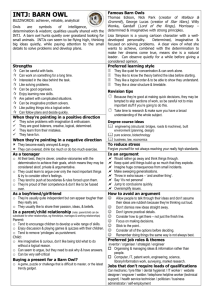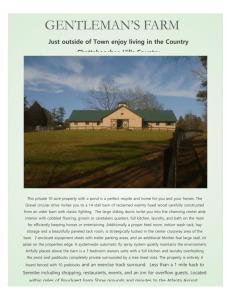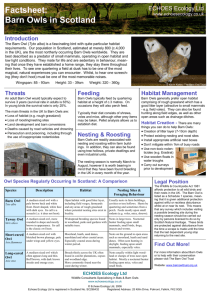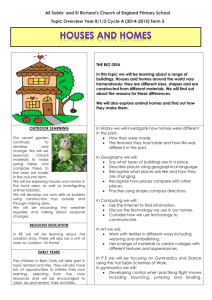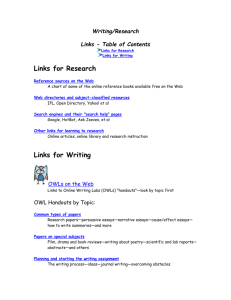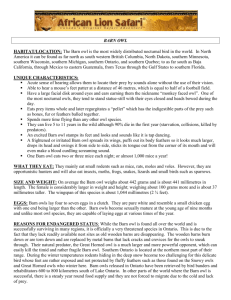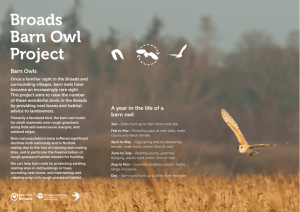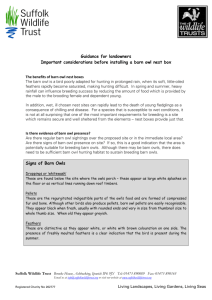Guidance for Selected Animals and Habitats
advertisement
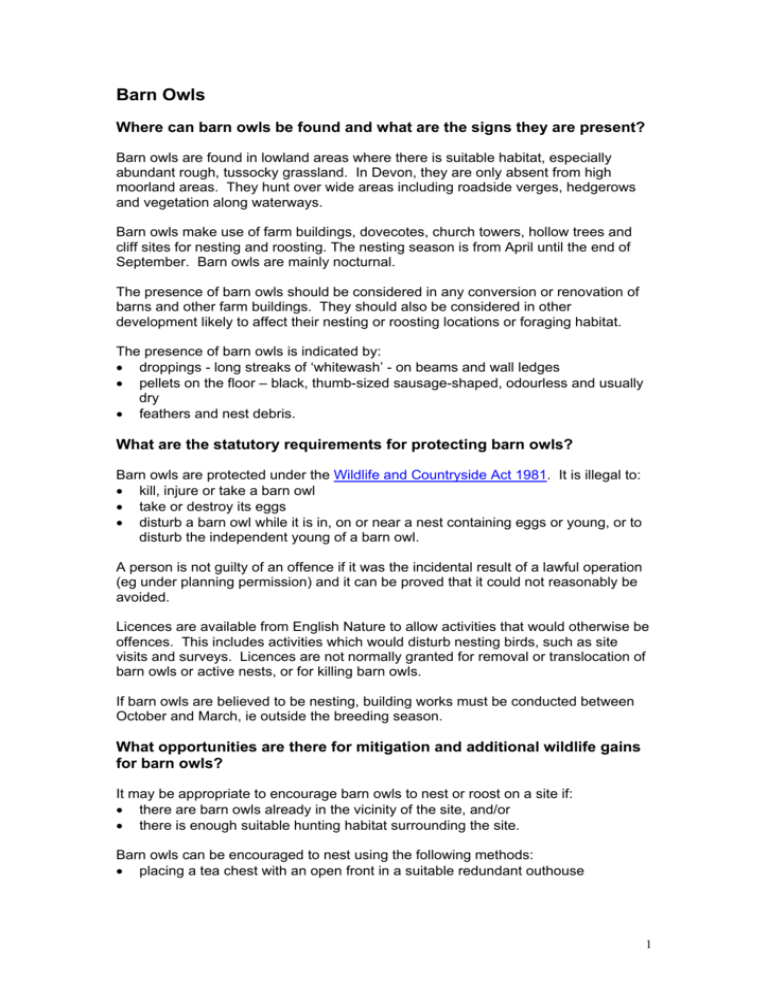
Barn Owls Where can barn owls be found and what are the signs they are present? Barn owls are found in lowland areas where there is suitable habitat, especially abundant rough, tussocky grassland. In Devon, they are only absent from high moorland areas. They hunt over wide areas including roadside verges, hedgerows and vegetation along waterways. Barn owls make use of farm buildings, dovecotes, church towers, hollow trees and cliff sites for nesting and roosting. The nesting season is from April until the end of September. Barn owls are mainly nocturnal. The presence of barn owls should be considered in any conversion or renovation of barns and other farm buildings. They should also be considered in other development likely to affect their nesting or roosting locations or foraging habitat. The presence of barn owls is indicated by: • droppings - long streaks of ‘whitewash’ - on beams and wall ledges • pellets on the floor – black, thumb-sized sausage-shaped, odourless and usually dry • feathers and nest debris. What are the statutory requirements for protecting barn owls? Barn owls are protected under the Wildlife and Countryside Act 1981. It is illegal to: • kill, injure or take a barn owl • take or destroy its eggs • disturb a barn owl while it is in, on or near a nest containing eggs or young, or to disturb the independent young of a barn owl. A person is not guilty of an offence if it was the incidental result of a lawful operation (eg under planning permission) and it can be proved that it could not reasonably be avoided. Licences are available from English Nature to allow activities that would otherwise be offences. This includes activities which would disturb nesting birds, such as site visits and surveys. Licences are not normally granted for removal or translocation of barn owls or active nests, or for killing barn owls. If barn owls are believed to be nesting, building works must be conducted between October and March, ie outside the breeding season. What opportunities are there for mitigation and additional wildlife gains for barn owls? It may be appropriate to encourage barn owls to nest or roost on a site if: • there are barn owls already in the vicinity of the site, and/or • there is enough suitable hunting habitat surrounding the site. Barn owls can be encouraged to nest using the following methods: • placing a tea chest with an open front in a suitable redundant outhouse 1 • incorporating a specially constructed owl window and loft into the gable end of a barn • provision of indoor or outdoor nest boxes in trees (but not in woodlands), buildings or on poles. These methods are simple and cheap if they are undertaken at the time of building work/renovation. Rough grassland should be retained or can be created to provide suitable foraging habitat. Where should I go for further information? Barn Owl Trust. 1995. Barn owls on site: a guide for developers and planners. Individual copies of this free publication can be obtained from English Nature’s Enquiry Service, tel. 01733 455100/1/2 or email at enquiries@english-nature.org.uk Information leaflets on subjects including outdoor nest boxes and habitat management can be obtained from the Barn Owl Trust: Barn Owl Trust Waterleat Ashburton Devon TQ13 7HU Tel. 01364 653026 The Hawk and Owl Trust. 1996. Planning for Barn Owls. This leaflet is can be ordered from the Hawk and Owl Trust – details can be found on their website 2
